Seaweeds of the South African South Coast


Order Ceramiales
Family Ceramiaceae
Ceramium glanduliferum Kylin 1938: 14
Plants mainly creeping, the apices up to 5 mm free from the substrate; more basal parts attached by several rhizoids per segment. Apices strongly incurved, thalli slightly unequally pseudodichotomous, main axis not distinguishable. Branching at intervals of 6-20 segments, sometimes an extra lateral given off at the first segment after a branching. Segments with 8 or 9 periaxial cells, each producing two acropetal and two basipetal cortication initials, the first acropetal one often remaining undivided and developing into a very prominent gland cell (in the rare male plants apparently absent). In mature segments the central cells completely hidden. Diameter of the filaments from 15 µm (apical cells) to 180 µm in creeping axes, the segments from much shorter than broad in the apical parts to somewhat longer, cortication incomplete, in older parts the uncorticated area increasing, both edges of the cortication fairly straight.
Tetrasporangia on a few subapical sections of the thallus, up to about four sporangia per segment, situated on the inside of forks. Sporangia completely exposed, roundish or somewhat lacrimate, measuring about 50-60 µm. Spermatangia mainly on the inside of ramifications, for several subapical sectors of the thallus, but in optima forma covering the whole segment. (Male plants doubtfully the same species, no gland cells, periaxial cells reaching the lower limit of the cortical band).
Collections, ecology and regional distribution
Occurring from Sea Point (Western Cape) into KwaZulu-Natal (16-51). Forming low turfs in the lower to mid-intertidal, often sand-binding (Stegenga et al. 1997).
World distribution: South African endemic.
Type locality: Isipingo Beach, near Durban, South Africa (Silva et al. 1996).
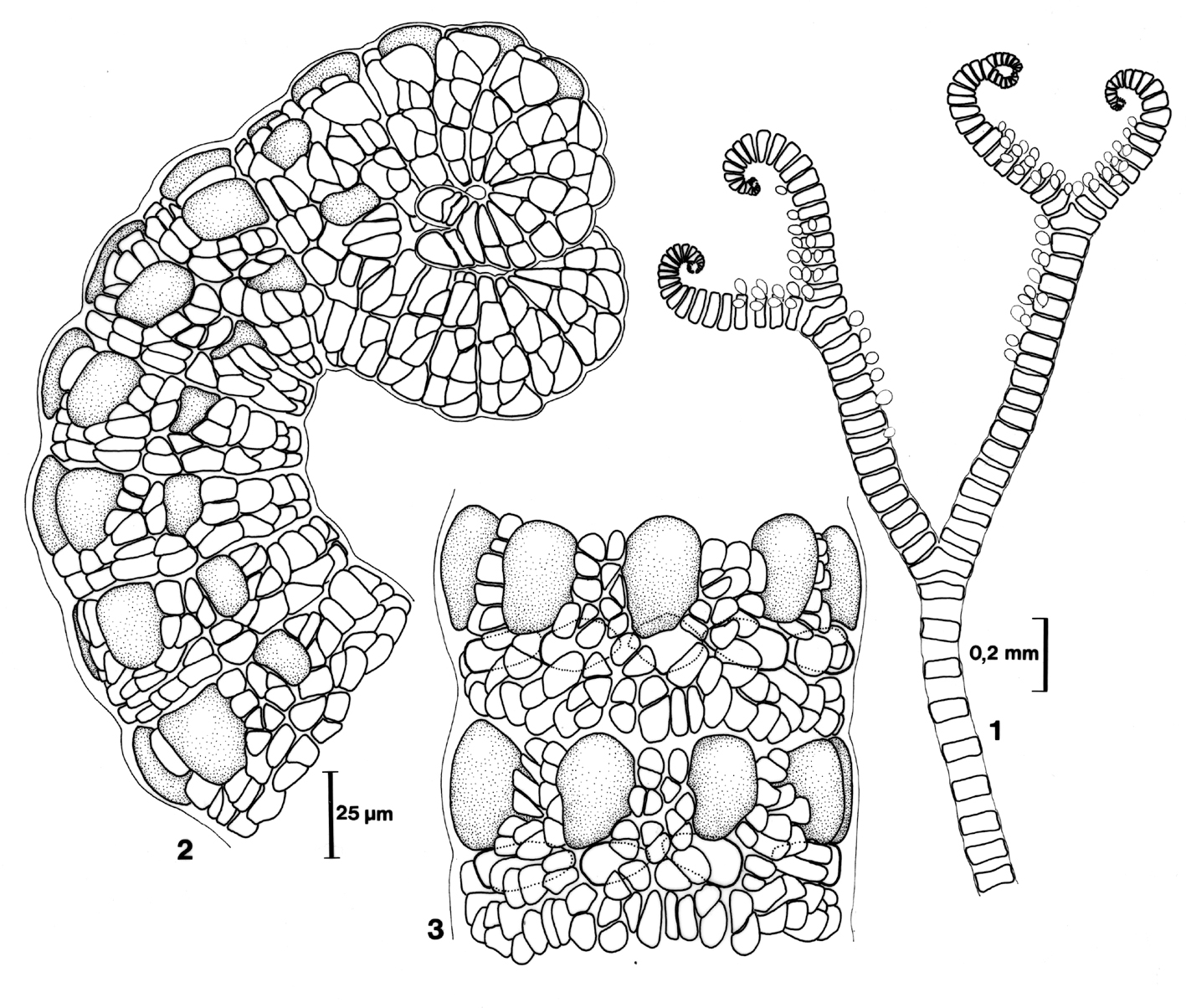
Ceramium glanduliferum. 1-2 Thallus apex. 3. Cortication in older segments (note large gland cells). Reproduced from Stegenga et al. (1997).
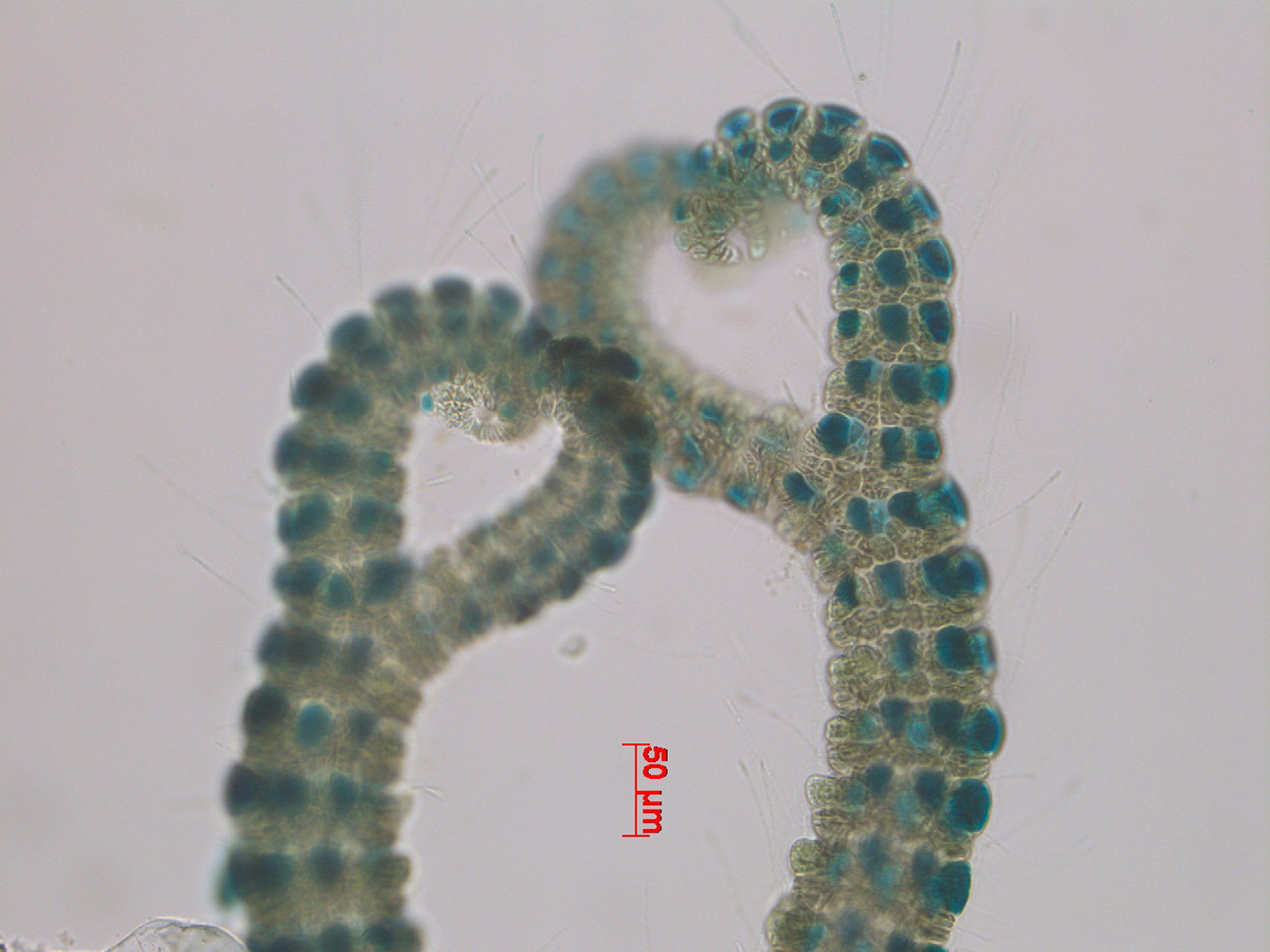
Ceramium glanduliferum. Thallus apex, with gland cells, Tsitsikamma. Stained slide.
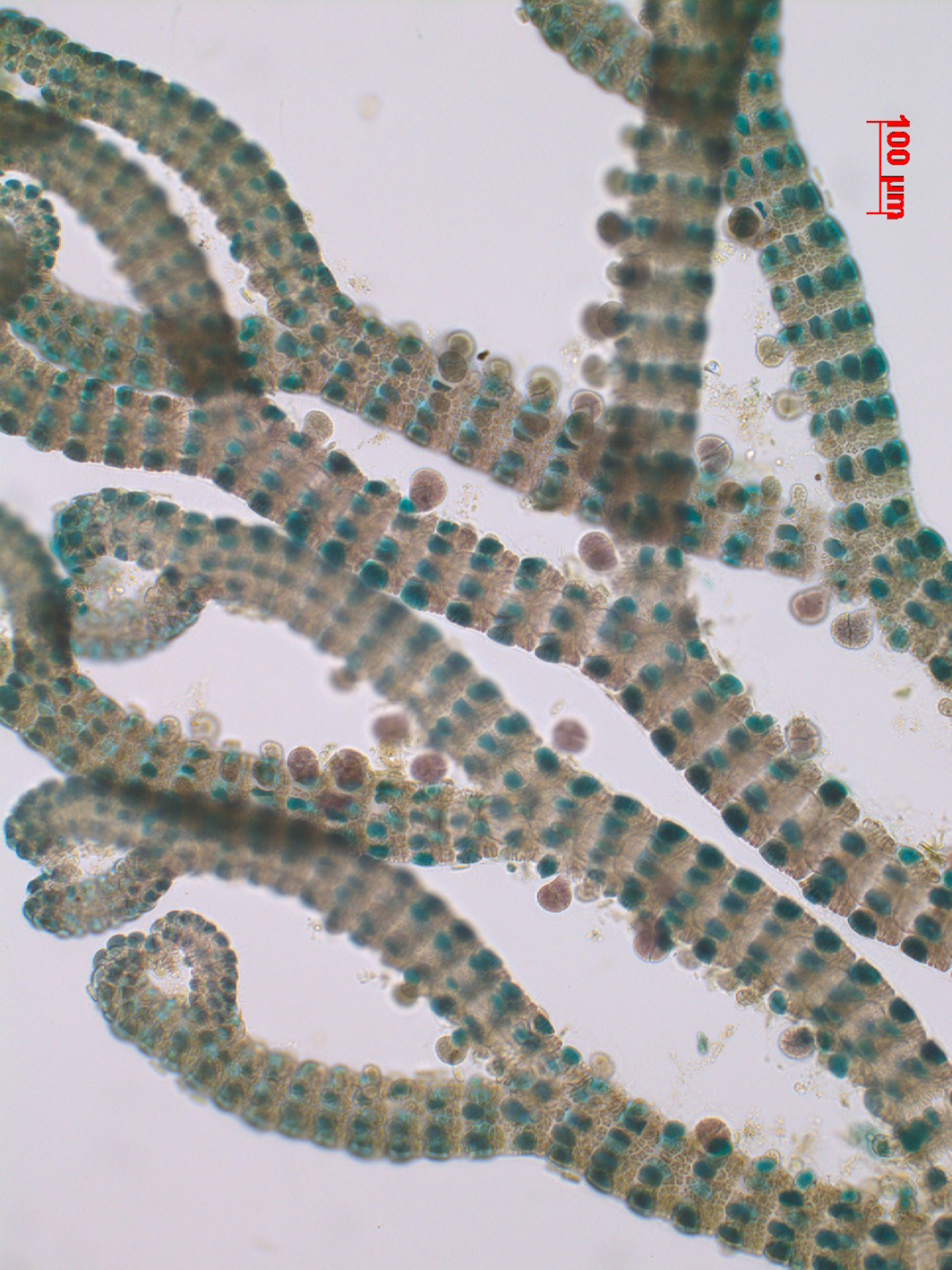
Ceramium glanduliferum. Thallus apex, with tetrasporangia, Tsitsikamma. Stained slide.
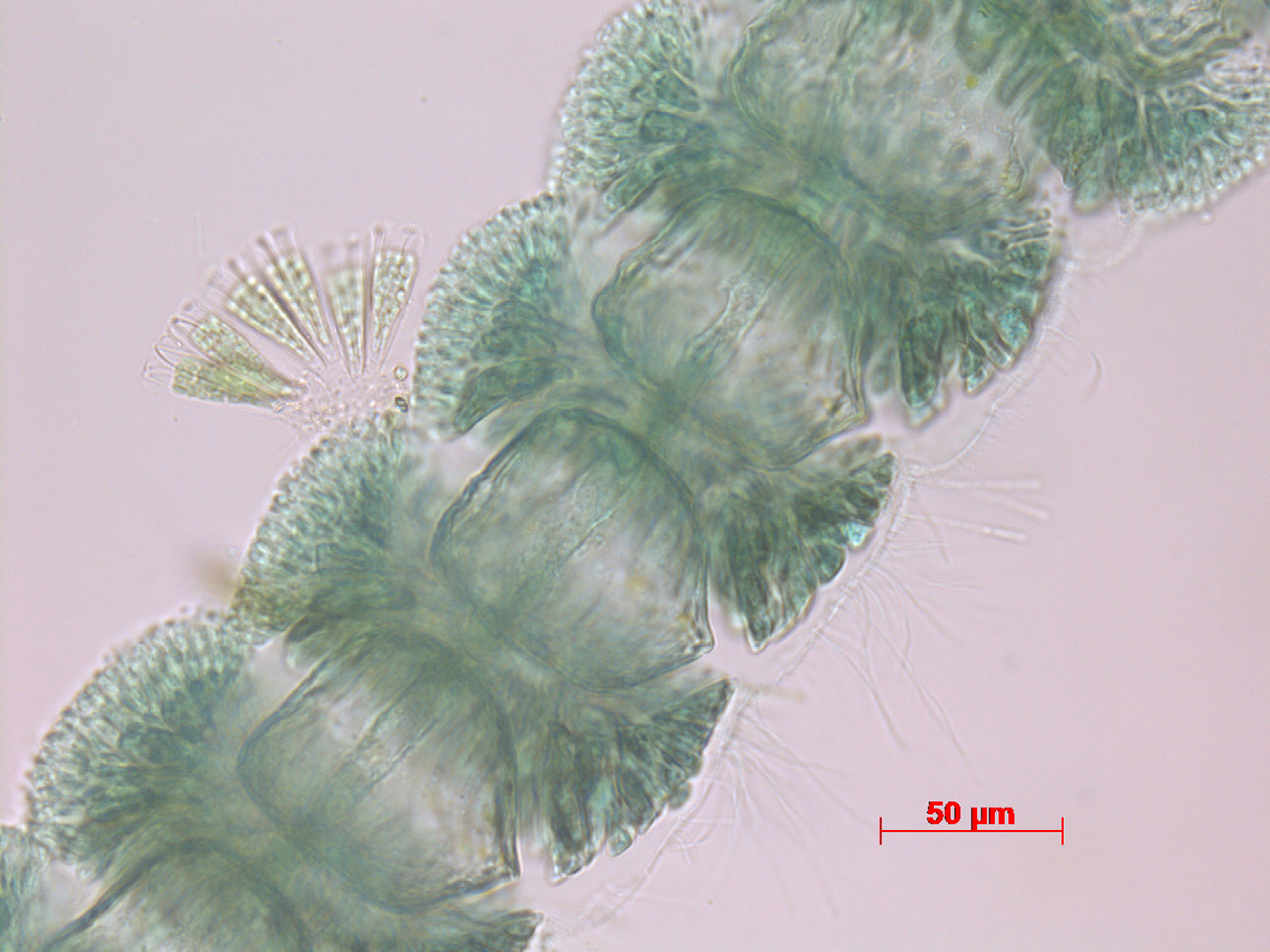
Ceramium glanduliferum (cf?). Male plant with spermatangia. Stained slide.
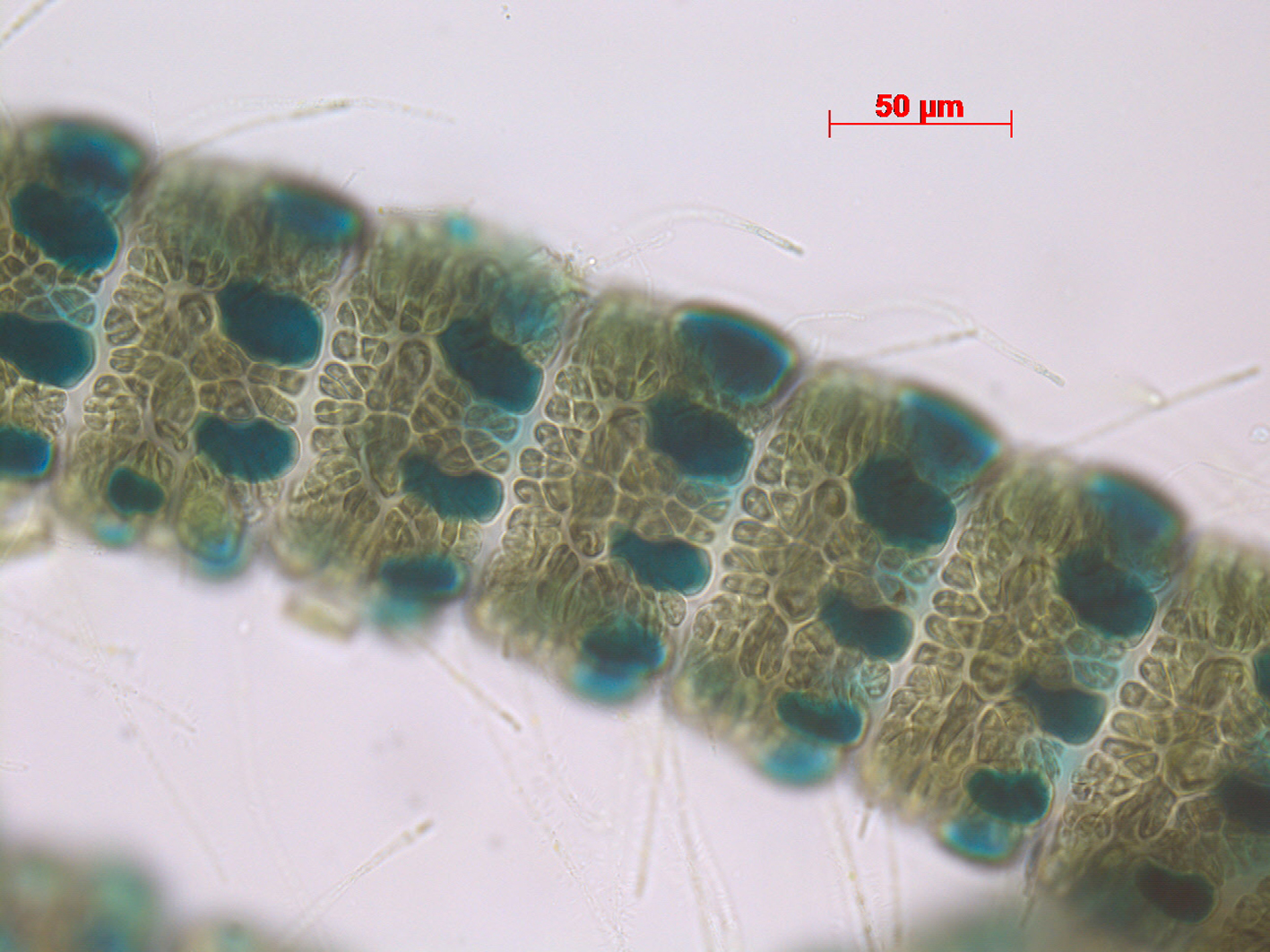
Ceramium glanduliferum, gland cells. Stained slide.
References Ceramium glanduliferum
Kylin, H. 1938. Verzeichnis einiger Rhodophyceen von Südafrika. Acta Universitatis Lundensis 34(8): 1-26, 10 figs, 8 plates.
Silva, P.C., Basson, P.W. & Moe, R.L. 1996. Catalogue of the benthic marine algae of the Indian Ocean. University of California Publications in Botany 79: 1-1259.
Stegenga, H., Bolton, J.J. & R. J. Anderson. 1997. Seaweeds of the South African west coast. Contributions from the Bolus Herbarium 18: 655 pp.
Cite this record as:
Anderson RJ, Stegenga H, Bolton JJ. 2016. Seaweeds of the South African South Coast.
World Wide Web electronic publication, University of Cape Town, http://southafrseaweeds.uct.ac.za; Accessed on 17 December 2025.